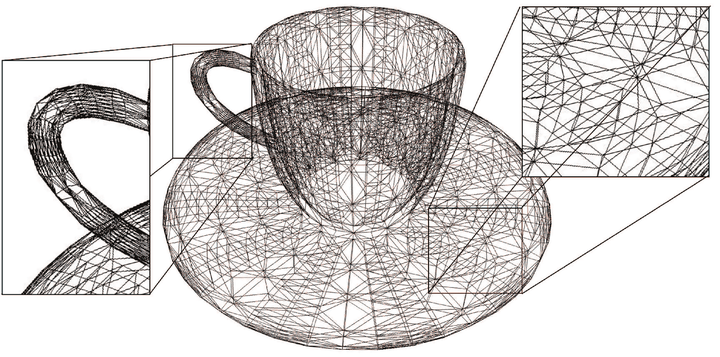 Adaptive tessellation from ESC pipeline.
Adaptive tessellation from ESC pipeline.
Abstract
Rendering of Bézier surfaces is currently performed by tessellating the model on the GPU and rendering the highly detailed triangle mesh. Whereas non-adaptive strategies apply the same tessellation pattern to the whole surface resulting in a uniform tessellation of the patch, adaptive approaches make it possible to reduce the number of triangles generated without a loss of quality. However, the most usual approaches to adaptive tessellation have little flexibility and do redundant computations and memory accesses, as each sample is independently evaluated in the Domain Shader of the DirectX11 pipeline. In this paper an adaptive tessellation technique based on the exploitation of the spatial coherence (ESC) data within each surface is presented. The GPU implementation of this technique is simple and efficient and, as consequence, the tessellation of complex models can be performed in real-time. The analysis of the GPU performance and limitations for different adaptive degree of the tessellation performed suggest innovations in future graphics card generations for supporting a larger degree of adaptivity without a penalty.